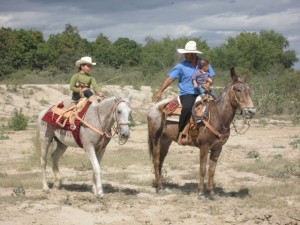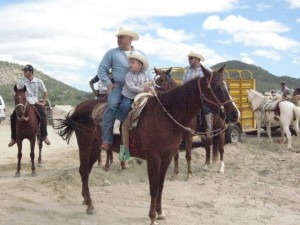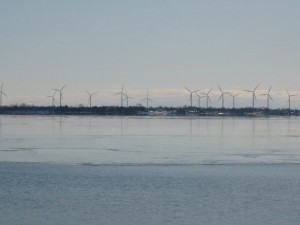<!–
TSUNAMI
–> /*~~~ psrt – var that indicates the highlighted link in the secondary navigation ~~~*/ try { if(pstr!=”){ var o = document.getElementById(pstr); if (o){document.getElementById(pstr).className =’hdMILinkSel’;} } function checkforDefault(){ if(hbBMDefault != ”){ document.getElementById(hbBMDefault).className = ‘navSelected’; defaultnum = parseFloat(hbBMDefault.substr(5,5)); if(defaultnum>1){ defaultnum = defaultnum-1; var holder = “hbBMI”+defaultnum; } } } checkforDefault(); //sets the specified tab to be a default tab if(hbBMDefault != ”){ document.getElementById(hbBMDefault).className = ‘navSelected’; } } catch(Exception) {}
I am about to go and run around letting neighbors and friends know that there is a tsunami warning for the Baja Coast (along with the entire Pacific Ocean region) as a result of the huge earthquake in Chile. The more I read the more I freak. I’m going to pack up my trusty Mac computer and get to high ground. Let’s hope it’s just a lot of hype and that we’re far enough around the tip of the peninsula not to be as greatly impacted. Hmmmm, not a fan of that word IMPACT right now. Wish us luck.
“Tsunami”
You may have seen tsunami in the news, the December 2004 tsunami event in Indonesia and perhaps more recently the less severe event in Samoa last year. Unfortunately much confusion comes from some internet sites that I will not post here that show fake pictures of tsunami. Those photos usually show some giant single breaking wave about ready to cover a coastline. That is not what happens. Below I provide a very brief heads-up on tsunami and what you might do in the case one comes to your coastline!
A tsunami is NOT like a normal ocean wave that is generated by wind. So surfers, forget it, you are not going to be able to ride a tsunami into fame and fortune, rather if you try you will be killed. Nearly all ocean waves you see are generated by wind and have distances between crests of a few hundred yards or less and intervals between success crests less than 22 seconds and most are less than 15 seconds, the most common being only about 4-7 seconds. They move at speeds nearly always less than 40 mph in deep water.
The tsunami on the other hand is different; it is called a “shallow water wave” because everywhere in the ocean water depths are considered shallow for this very long wave (on the order of miles). A shallow water wave is unique, it moves at a speed controlled by the depth of the water it moves in; that speed is basically proportional to the square-root of water depth. So the deeper the water the fast the tsunami can move.
It turns out that for average ocean depths of about 12,400 feet average tsunami speed is about 460 miles per hour! In deeper water they move faster and in shallower water they mover slower. In deep water the height of the tsunami is not large, but even if it were 40 feet high (which would be gigantic for a deep water tsunami height), that height is spread over a distance of many miles so a ship at sea would not even perceive the passage of that fast moving wave, but would bob harmlessly atop it not even knowing the tsunami had passed by at great speed (so much for the “Poseidon Adventure”).
Keep in mind the wave moves through the ocean in deep water, the ocean water does not move with the wave, rather it undulates up and down nearly in place. If this were not the case then waves moving from, for example, the Gulf of Alaska to the coast of Southern California would bring with them very frigid water temperatures that would plummet wildly below local water temperatures as waves came in; that does not happen, waves arrive from the Gulf of Alaska, but the cold water they move through stays nearly in place with the surface undulating in place as waves move by.
OK, so we have this very long wave speeding toward the coast and as water shallows the tsunami slows quickly, that causes the wave to contract like an accordion and causes water to pile up to make the wave much higher than it was in deep water. The wave eventually moves on shore as a large inundating surge of high water. There may be some breaking waves as seen in the video I attached but those waves are far too narrow to cause all the inundation you see, inundation occurs from the very long wave that pushes its water across the coast, obviously worse for larger tsunami.
So how much lead time and warning do you have before a generated tsunami strikes? That simply depends on where the tsunami comes from. If it has been generated locally by a local quake or submarine slide it, the tsunami can push onshore in minutes or less leaving little time to “escape/evacuate.” If you are at a coast and feel a large quake, ALWAYS race away from waters edge as fast as possible. Seek high ground or high well built structures immediately.
If a tsunami is generated by a quake far from you and it is large, it will eventually reach your coast! But you will not have felt the quake or may not even be aware a quake had occurred far across the ocean. We can estimate the water depth between you and the quake and get a good estimate of how long it will take to reach you. Remember on average it will be moving about 500 mph so far away does not mean far away in time!
Fortunately, as a tsunami moves away from its generating quake it spreads out, very similar to what happens if you drop a pebble in a pond, the wave nearest the pebble is largest and waves propagating away get lower in height the farther they move from the pebble, because the energy is spread out over a greater and greater area.
The tsunami is very similar, except it will distort from circular because of varied bottom depth which causes it to move at varied speeds in varied directions. If the quake is far away you will normally have plenty of time to react to a tsunami warning siren and get away safely, those generated near you require very fast response usually well before any official warning blares from a siren! NEVER go to the coast to see the incoming tsunami. That behavior happened in Los Angeles in the 1980’s! People were crowding and hanging off of piers and jetties awaiting the arrival of the tsunami! Fortunately when it came if was only inches high and no one could see it by eye; man that could have been a huge disaster.
I leave you with one last thing about the tsunami that relates to its Japanese name “harbor wave.” Because its speed is controlled almost entirely by water depth, it is a slave to ocean bathymetry and is often distorted and bent by it, we call this wave refraction. The tsunami is so long that the refraction can be extreme and tsunami heights are often focused in bays and harbors. This same refraction can and does cause a tsunami to be able to bend all the way around an island and inundate the opposite side of the island relative to the direction it originally came from. So no island coastline is safe from a tsunami no matter what direction the tsunami originally comes from!














